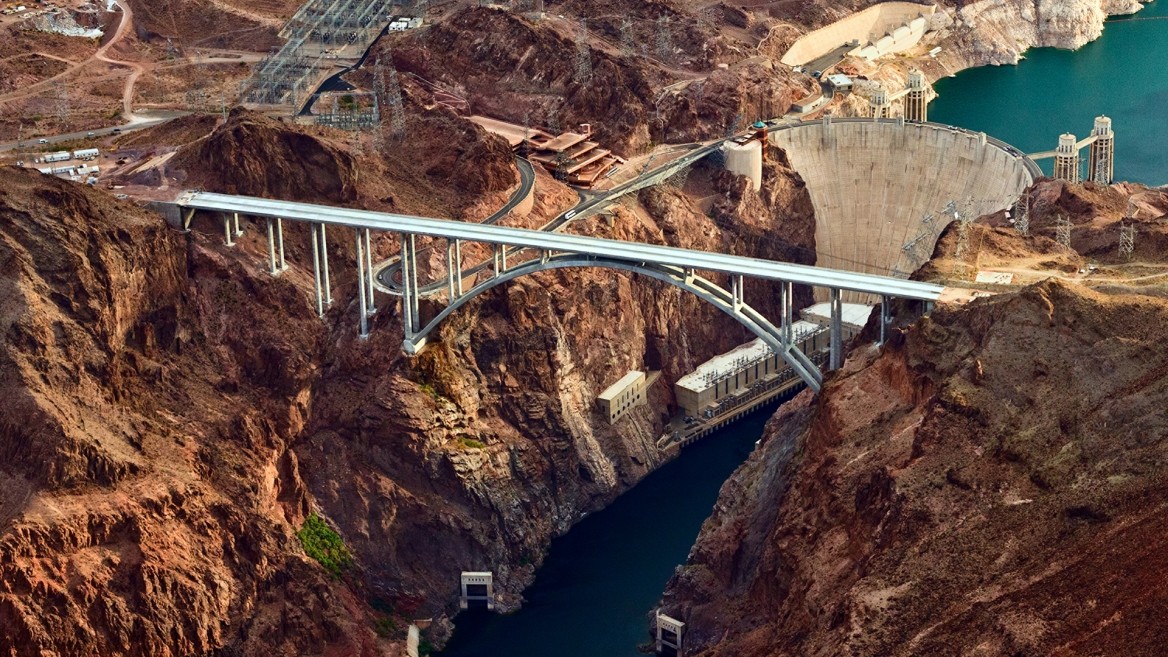Hoover Dam Bypass Bridge

TYLin led the design of the landmark Hoover Dam Bypass Bridge (Mike O’Callaghan-Pat Tillman Memorial Bridge) across the Black Canyon between the states of Arizona and Nevada.
The bridge is located 1,500 feet downstream of the Hoover Dam, one of the foremost engineering wonders of the world.
At 1,900 feet long, with a 1060-foot-long main span, the Hoover Dam Bypass Bridge opened to traffic as the highest and longest single-span concrete arch bridge in the Western Hemisphere.
The spectacular setting for the bridge also proved to be its greatest design and construction challenge. The Black Canyon below the dam is a formidable, 890-foot-deep gorge with dramatic rock cliffs, steep canyon walls, and a vast geological palette.
TYLin designed the Hoover Dam Bypass Bridge as a unique concrete-steel hybrid, the first of its kind in the U.S. The twin-ribbed arch supports the tallest precast, segmental concrete columns in the world.
The Hoover Dam Bypass Bridge benefits the local economy by significantly reducing travel congestion for millions of motorists and restoring a critical North American Free Trade Agreement (NAFTA) trade route for close to 2,000 trucks per day. The project also ensures safer and faster travel on U.S. 93 and helps to protect the iconic Hoover Dam.
Project Highlights:
- The bridge was the centerpiece of the four-lane Hoover Dam Bypass Project, which included 1.2 miles of approach roadway in Arizona and 2.3 miles of roadway in Nevada.
- TYLin’s design for the innovative hybrid structure complements the Hoover Dam with the high-performance concrete arch while limiting the load demands with a modern steel superstructure.
- The engineering performance needed to withstand the demands of wind, earthquake, and service loads well beyond the codified 75-year life.
- Sustainability measures included maintaining the water quality of the Colorado River by collecting drainage and conveying it by pipe from the deck to detention areas off the ends of the bridge.
- The concrete arches and columns are unpainted and concrete surfaces uncoated to provide long-term sustainability, reduce maintenance, and provide an aesthetic consistent with the features of the dam.
- Changes to the approach alignment helped save 200,000 cubic yards of rock excavation and reduce the project footprint by 15 acres.
Image credit: Jamie Stillings Photography